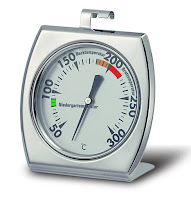Fimo Professional; Effects Polymer Clay is stiffer than some of the other polymer clay's and remains flexible after is has been baked in the oven. It is great for more detailed work such as cane work, miniatures, flower sculptures and doll figurines. It is also perfect for making jewellery and because of the wide range of colours and effects available it can produce some very beautiful and realistic jewellery pieces.
Tuesday, 25 August 2015
Popular Oven Baked Clay
Fimo Professional; Effects Polymer Clay is stiffer than some of the other polymer clay's and remains flexible after is has been baked in the oven. It is great for more detailed work such as cane work, miniatures, flower sculptures and doll figurines. It is also perfect for making jewellery and because of the wide range of colours and effects available it can produce some very beautiful and realistic jewellery pieces.
Sunday, 23 August 2015
Clay Work with Oven Hardening Clay
Polymer clay's are oil-based and therefore must be heated to cure, however, a home oven can be used and a kiln is not required. The baking process varies with each brand so it is always important to check the packaging instructions for each clay. To give you a rough idea, Fimo recommend you bake the clay at 110*C/230*F for 30 minutes. This will also depend on the size and thickness of the clay creation.
 |
| Oven Thermometers Click for more |
takes at least 24 hours to dry. Polymer clay will be plastic like, waterproof and very durable if cured properly. Polymer clay does not harden completely until it is cool so will feel soft to touch when it is taken out of the oven.
Another positive factor for oven baked clay is that it comes in a wide range of colours and effects. This is great if you don't want to paint your creations or you are making a specific creation that needs a certain surface effect such as marbling or granite. If you do want to paint the clay after it has been baked then acrylic paints are one of the best to use, although your clay creation will need to be varnished once the paints dry, in order to protect it.
Friday, 21 August 2015
Clay Work With Air Dry Clay
Unlike traditional clay's that need to be fired in a kiln at a high temperature, or polymer clay's that need to be cured in an oven air dry clay is a mainly water based, which is simply clay mixed with water. It therefore cures in the open air at room temperature, so must be kept in an air tight container when not in use. It is usually inexpensive and it is generally very easy to use and pliable.
Wednesday, 19 August 2015
Clay Work Clays
Clay work and sculpture isn't just for the professional artist, all you need is a few basic tools and a little imagination. In fact you don't even need that much imagination, thanks to social media! Pinterest and Instagram will provide thousands of clay art projects and tutorials at you finger tips.
Clay artists have a never ending choice of clay sculpture materials and in fact many are not technically clay but can create very similar sculptures and art projects as the professional ceramicists and sculptors.
The 3 basic types are oil-based, wax-based and water-based. They are usually categorize as heat-cured, self-hardening air-dry or non-hardening. There is also ceramic and stone-based clays, which need to be cured in a kiln at very high temperatures.
Subscribe to:
Comments (Atom)
